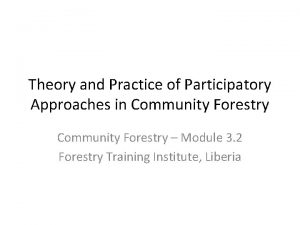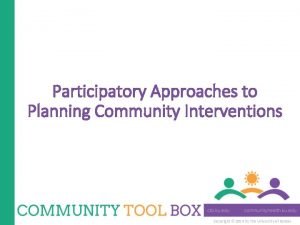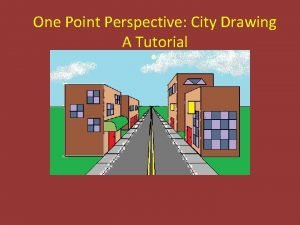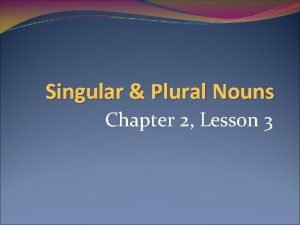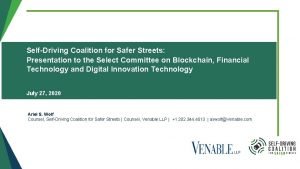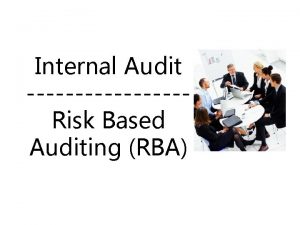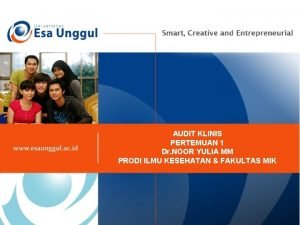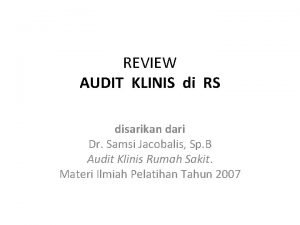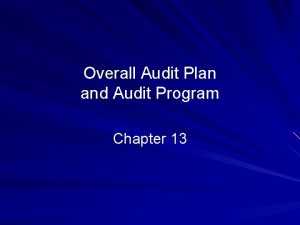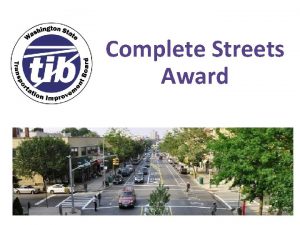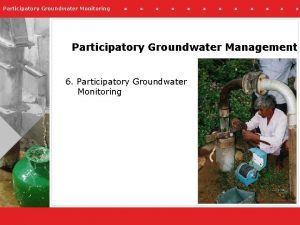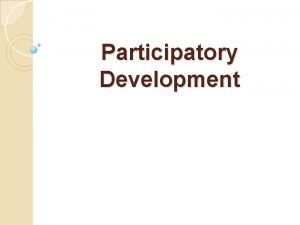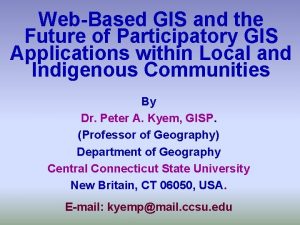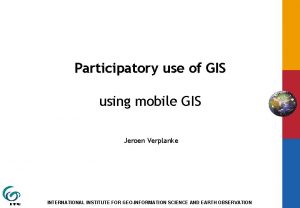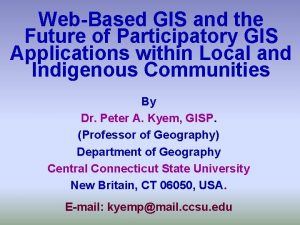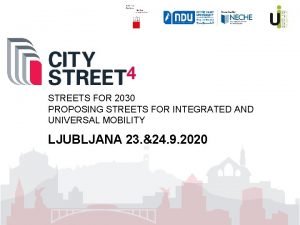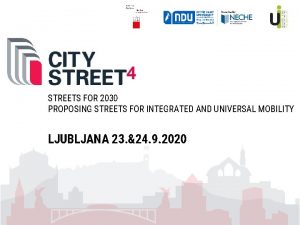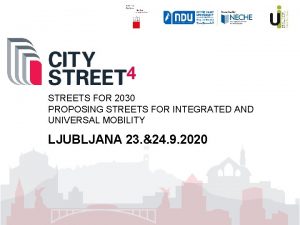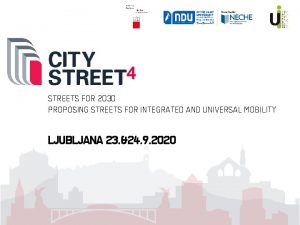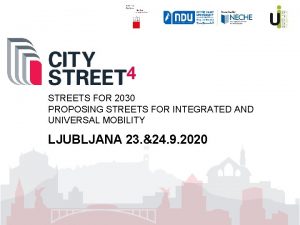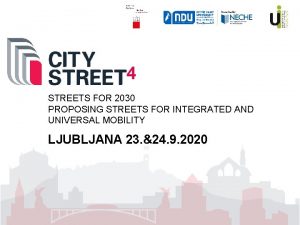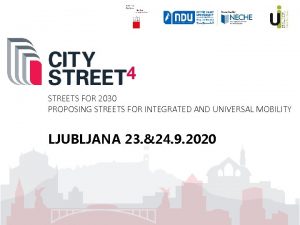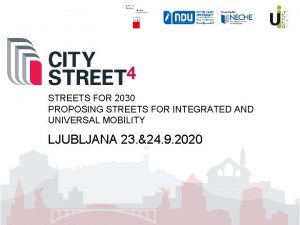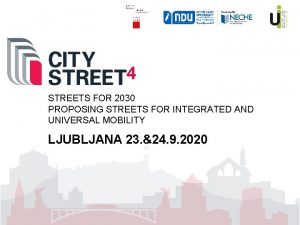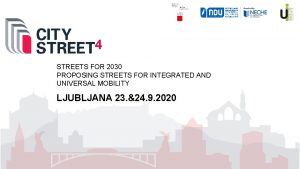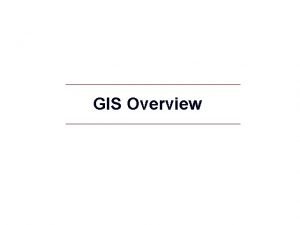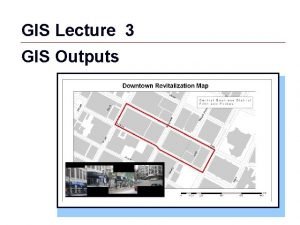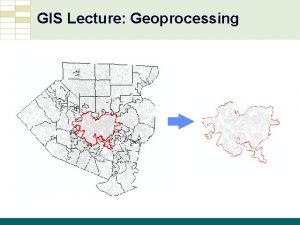Assessing Complete Streets A Participatory GIS Audit Approach
























- Slides: 24

Assessing Complete Streets: A Participatory GIS Audit Approach Marc Schlossberg, Ph. D Associate Professor Planning, Public Policy & Management Project supported by:

Marc Schlossberg, Ph. D University of Oregon, 2008

Marc Schlossberg, Ph. D University of Oregon, 2008

Context • Theoretical Underpinning – PPGIS: Public Participation GIS – Asset Based Community Development – Community-Based Research • Guiding Principles – Easy to use – Minimize variables • Primary Goals – Collect data and understand the environment – Facilitate community organizing and capacity Marc Schlossberg, Ph. D University of Oregon, 2008

The Community Assessment Tool Technology Pearl ST Marc Schlossberg, Ph. D University of Oregon, 2008

Complete Streets Assessment Start with subjective Then objective Overall evaluation Marc Schlossberg, Ph. D University of Oregon, 2008

Is this a reasonable walking or biking environment? Marc Schlossberg, Ph. D University of Oregon, 2008

Is this a reasonable walking or biking environment? Marc Schlossberg, Ph. D University of Oregon, 2008

There are standards…and there are norms Is this a reasonable walking or biking environment? Marc Schlossberg, Ph. D University of Oregon, 2008

A Typical Workshop (6 hours) • Coffee (10) • Introductions of Participants and Instructors (15) • SRTS Overview and Discussion (35) • Break (10) • Guidance on how to use the data collection tool (60) • Data Collection (2. 5 hours) • Group reflection, data synthesis, and discussion (40) • Next steps (30) Marc Schlossberg, Ph. D University of Oregon, 2008

Complete Streets General Marc Schlossberg, Ph. D University of Oregon, 2008

Complete Streets Ped Marc Schlossberg, Ph. D University of Oregon, 2008

Complete Streets Bike Marc Schlossberg, Ph. D University of Oregon, 2008

Complete Streets Transit Marc Schlossberg, Ph. D University of Oregon, 2008

Marc Schlossberg, Ph. D University of Oregon, 2008

Marc Schlossberg, Ph. D University of Oregon, 2008

Marc Schlossberg, Ph. D University of Oregon, 2008

Marc Schlossberg, Ph. D University of Oregon, 2008

Marc Schlossberg, Ph. D University of Oregon, 2008

Marc Schlossberg, Ph. D University of Oregon, 2008

Subject: received official word: RMS received the SRTS Grant Dear All: I just received a phone call from the Oregon SRTS coordinator that RMS received its grant! Marc Schlossberg, Ph. D University of Oregon, 2008

Conclusion • Compelling reasons to increase pedestrian and bicycle activity • Is it an engineering problem? • Partially yes, partially no. • Political and behavioral issue equally important • Participatory assessment tools – identify hazards and assets AND catalyze a community coalition to action • Result: good infrastructure and active users Marc Schlossberg, Ph. D University of Oregon, 2008

Marc Schlossberg, Ph. D University of Oregon, 2008

Questions? Project supported by: Marc Schlossberg, Ph. D Associate Professor Planning, Public Policy & Management schlossb@uoregon. edu
 Disadvantages of participatory planning approach
Disadvantages of participatory planning approach Participatory development
Participatory development Disadvantages of participatory planning approach
Disadvantages of participatory planning approach The rights to the streets of memphis answers
The rights to the streets of memphis answers Vertical line
Vertical line Objectives nouns
Objectives nouns If you ever disturb our streets again
If you ever disturb our streets again Green streets
Green streets And the afternoon the evening sleeps so peacefully
And the afternoon the evening sleeps so peacefully Sweet streets desserts
Sweet streets desserts Self-driving coalition for safer streets
Self-driving coalition for safer streets Sweet streets desserts
Sweet streets desserts Many have to myself a person walk the road
Many have to myself a person walk the road Perbedaan audit konvensional dengan audit berbasis risiko
Perbedaan audit konvensional dengan audit berbasis risiko Clinical meeting
Clinical meeting Beda audit medis dan audit klinis
Beda audit medis dan audit klinis Penyelesaian audit dan tanggung jawab pasca audit
Penyelesaian audit dan tanggung jawab pasca audit Hubungan ekonomisasi efisiensi dan efektivitas
Hubungan ekonomisasi efisiensi dan efektivitas Perbedaan prosedur audit top-down dengan bottom-up
Perbedaan prosedur audit top-down dengan bottom-up Auditor definition
Auditor definition Perbedaan audit konvensional dengan audit berbasis risiko
Perbedaan audit konvensional dengan audit berbasis risiko Is a latin word
Is a latin word Audit universe adalah
Audit universe adalah Overall audit plan
Overall audit plan What is auditing around the computer
What is auditing around the computer
